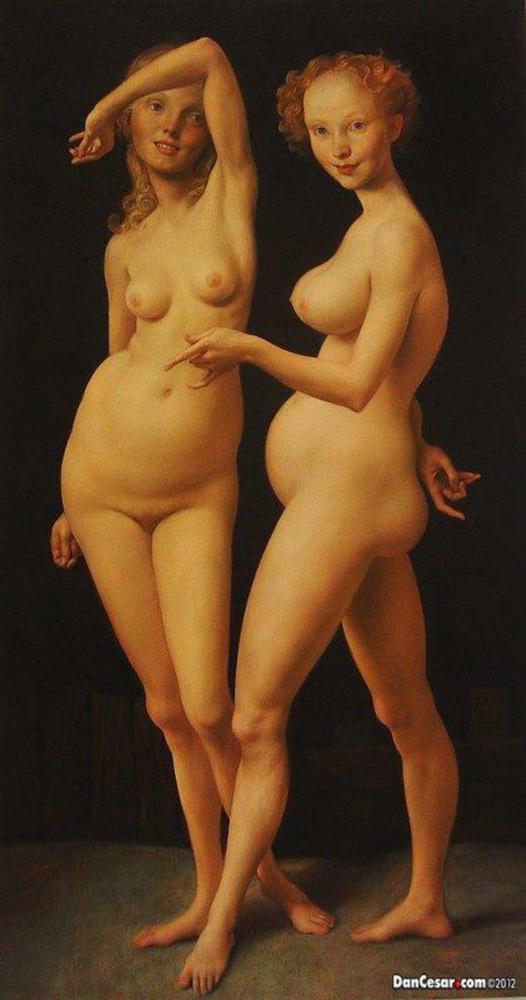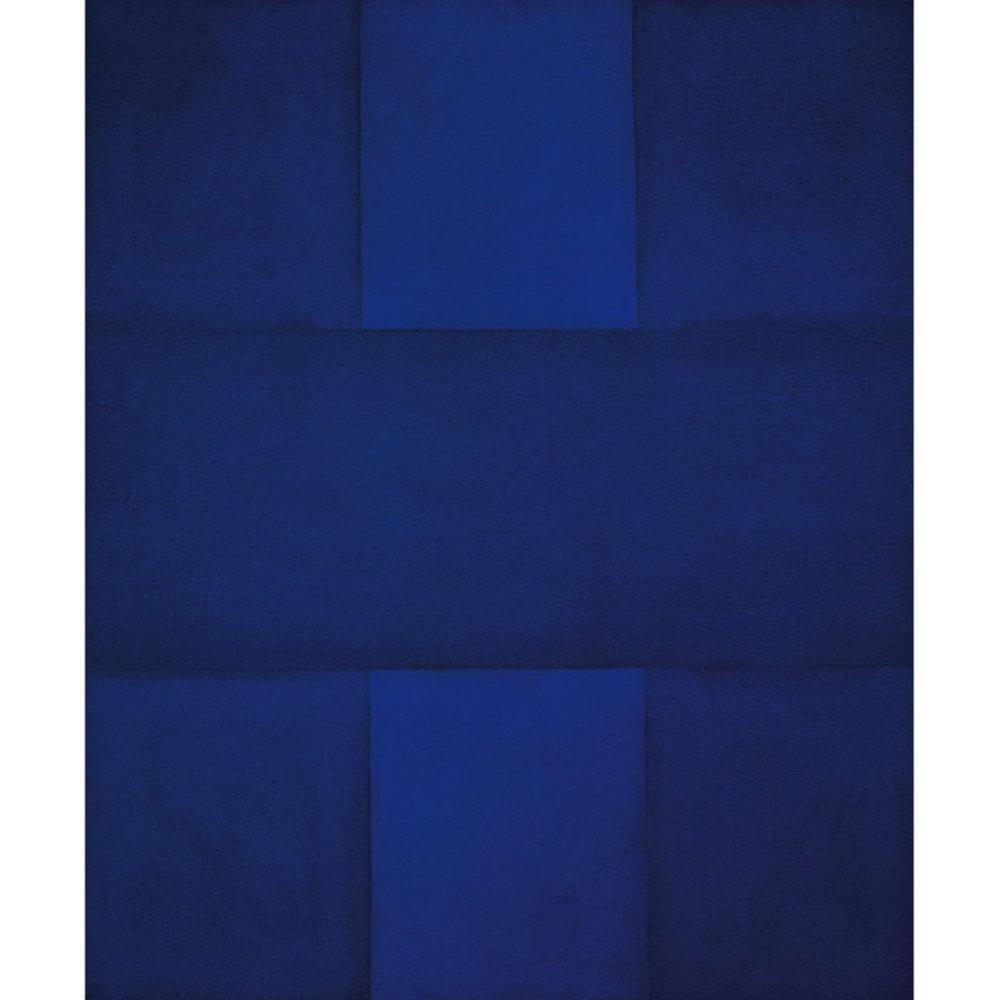I chose this painting by John Currin because, despite appearing to be a purely realistic painting, the artist has distorted the women’s bodies; a quality which I thought brought it closer to more abstract representations of art. A special part of this painting is the way light and color were used to highlight the subjects in a way which exemplifies their nudity. The soft, warm tones of the light complement the feeling of soft, tender skin and the darkness in the back helps to focus the eye on the women’s bodies. The body shapes themselves are interesting to look at because while realism depicts objects and landscapes in the same way that we see them in every day life, Currin has altered this vision slightly and injected additional meaning. In most realistic paintings, the work is often reduced to the schemas we hold for it in our minds—a painting of a house represents a house and a painting of a person represents just that person. By distorting the bodies, Currin adds that additional layer of meaning to everyday life and makes the viewer wonder about the emotions and ideas that could be interpreted from the painting. (Even though in this case, Currin insisted his work served only as a testament to paint’s abilities to capture movement and form)
Round two:
1) Description:
Obscene
Delicate
Flowing
Bold
Smooth
Organic
Curvaceous
Dramatic
strong contrast
Disfigured
Grotesque
2) Analysis
Within the context of his other paintings, it seems that the artist wants to express an emerging view of women’s bodies and sexuality. Additionally, there are hints of political meaning, given that the distorted nature of women’s bodies in his other works is often paralleled by critics to high class’ similarly distorted way of life. Through the delicate lines, smooth texture and curvaceous shapes, and several layers of color to create the skin, he displays their nudity in a way that rejects the overly pornographic view of women in media. On the issue, Currin comments that by showing his women bare, he removes the pent up energy involved with suggested sexuality (which is often how artists choose to display their women), which makes this particular painting very “asexual.” I tend to disagree that his work shows women in a new and different light, especially given that his more recent works are not at all devoid of the pornographic focus society gives to women’s bodies.
For this particular painting, however, I think he is successful in creating an intimate and delicate depiction of the female figure that isn’t entirely focused on their sexual/reproductive roles. The lack of men in the frame, the disfigurement, and the lack of behaviors that suggest reproductive undertones allow this painting to display the female body independently of the “male context” and the meanings and associations “naked women near men” often have.

